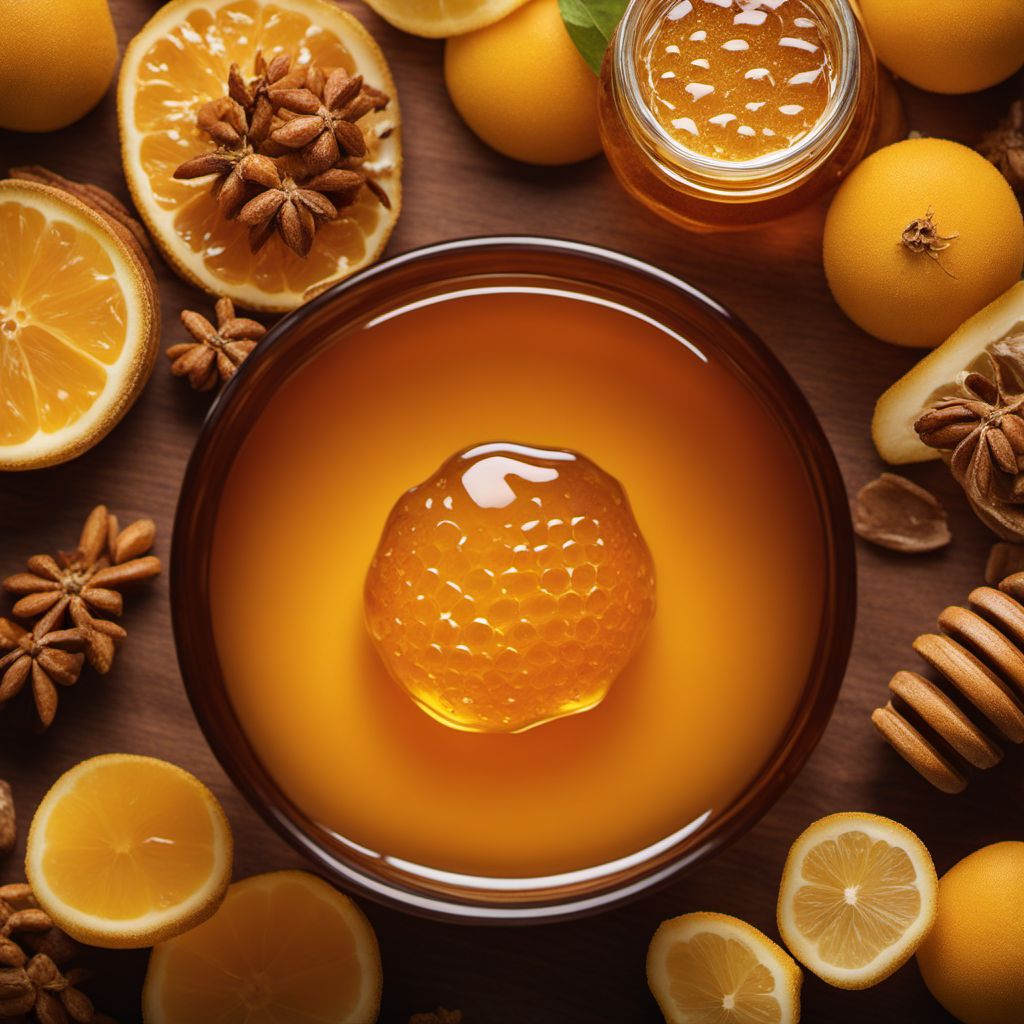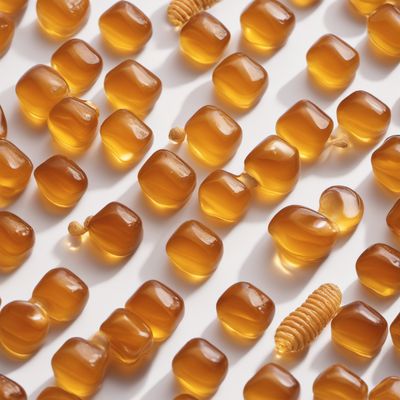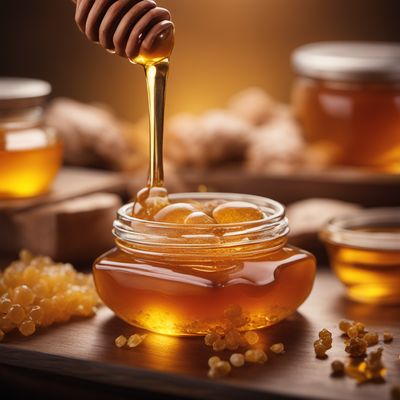
Ingredient
Honey, polyfloral
Nature's Golden Nectar: Exploring the Delights of Polyfloral Honey
Polyfloral honey, also known as wildflower honey, is a type of honey produced by bees that collect nectar from a variety of flowering plants. It is characterized by its rich golden color, thick consistency, and aromatic floral notes. The taste of polyfloral honey can vary depending on the types of flowers the bees have visited, but it generally has a sweet, floral flavor with hints of caramel and fruit. Its texture is smooth and creamy, making it a delightful addition to spreads, dressings, and desserts. The appearance of polyfloral honey can range from light amber to dark brown, depending on the floral sources and the region it is produced in.
Origins and history
Polyfloral honey has a long history dating back thousands of years. It has been enjoyed by various cultures around the world, including ancient Egyptians, Greeks, and Romans. The exact origins of polyfloral honey are difficult to trace, as it is produced by bees that forage on a diverse range of flowering plants. However, it is believed to have originated in regions with abundant floral biodiversity, such as the Mediterranean, Middle East, and North America. Throughout history, polyfloral honey has been highly valued for its medicinal properties and as a natural sweetener.
Nutritional information
Polyfloral honey is a natural source of carbohydrates, providing energy and a quick boost of sweetness. It also contains small amounts of vitamins, minerals, and antioxidants, although the exact nutritional composition can vary depending on the floral sources. It is important to note that honey is high in calories, with approximately 64 calories per tablespoon.
Allergens
Honey, including polyfloral honey, may cause allergic reactions in individuals who are allergic to bee pollen or have a sensitivity to honey. It is not recommended for infants under the age of one due to the risk of botulism.
How to select
When selecting polyfloral honey, look for jars that are labeled as "raw" or "unfiltered" to ensure you are getting a high-quality product. Check for clarity and avoid honey that appears cloudy or crystallized, as this may indicate poor quality or adulteration. Opt for honey that is sourced from reputable beekeepers or local farmers markets for the freshest and most authentic flavors.
Storage recommendations
To maintain the freshness and quality of polyfloral honey, store it in a cool, dry place away from direct sunlight. Avoid storing it in the refrigerator, as this can cause crystallization. If crystallization occurs, gently warm the honey in a water bath to dissolve the crystals without overheating it.
How to produce
While producing honey on a large scale requires specialized knowledge and equipment, amateur beekeepers can start their own hives and produce their own polyfloral honey. It involves setting up beehives, providing a suitable environment for bees to forage, and extracting honey from the honeycombs using proper beekeeping techniques.
Preparation tips
Polyfloral honey is a versatile ingredient that can be used in a variety of ways. It can be drizzled over yogurt or oatmeal, used as a natural sweetener in tea or coffee, incorporated into salad dressings or marinades, or used as a glaze for roasted meats or vegetables. When using honey in baking, reduce the amount of liquid in the recipe slightly to account for the added moisture. To prevent sticking, lightly coat measuring spoons or cups with oil before measuring honey.
Substitutions
Maple syrup or agave nectar can be used as substitutes for polyfloral honey in recipes that require a liquid sweetener. However, keep in mind that these substitutes may alter the flavor profile of the dish.
Culinary uses
Polyfloral honey is a versatile ingredient that can be used in both sweet and savory dishes. It adds a natural sweetness to baked goods, such as cakes, cookies, and bread. It can be used as a glaze for roasted meats or vegetables, lending a delicious caramelized flavor. Polyfloral honey is also a popular choice for drizzling over pancakes, waffles, or fresh fruit. In addition, it can be incorporated into salad dressings, marinades, and sauces to balance flavors and add a touch of sweetness.
Availability
Polyfloral honey is commonly available in regions with diverse floral ecosystems, such as Europe, North America, and parts of Asia. It can be found in grocery stores, specialty food stores, and farmers markets.


